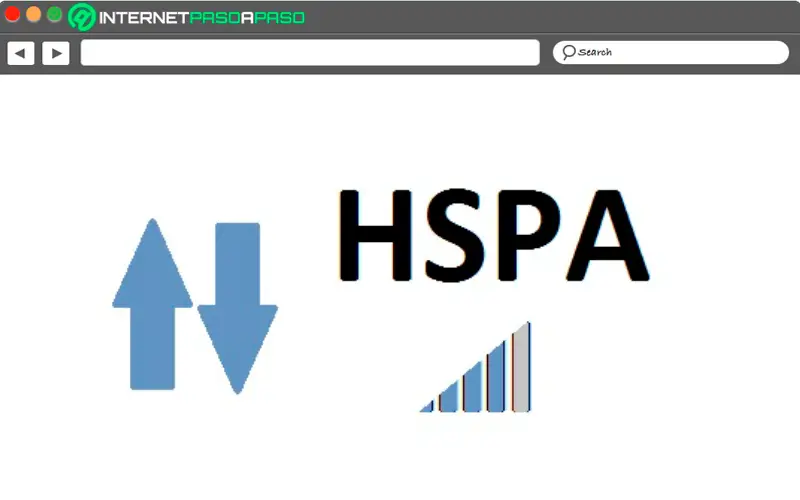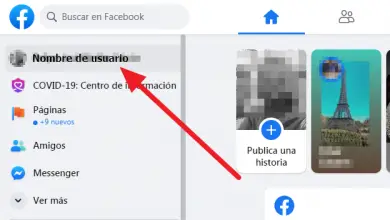HSPA (High Speed Packet Access) What is it, how does it work and what is it for in telecommunications?

High-speed packet access or high-speed packet access Is a telecommunications technology known as 3,5G, third generation ( 3G ). it was designed with the aim of improving the technology UTMS (Universal Mobile Telecommunications System).
Thus HSPA works thanks to two specific protocols which are used in tandem , which help him to function at high speed. All of this has been converted into an improved version which allows extend and improve the performance of mobile phone companies' networks .
If you are still not fully aware of this HSPA technology , we will explain here what it is about, its main function and its function in telecommunications, for that, follow in detail everything that we will explain in this post.
What is HSPA and what is this technology used for in telecommunications?

Fundamentally, the HSPA is an update of what is 3G UMTS which allows provide higher data speed being higher in both uplink and downlink. All this with the aim of improving performances and thus to provide a better customer service .
Therefore, all of this was designed to be able to increase the Internet connectivity capacity of 3G smartphones, based on UMTS and WCDMA . Taking into account that this is the 3GUMTS which allowed to mobile communications from move from a voice-centric to a data-centric system.
However, 3G UMTS speeds were not at all sufficient in terms of browsing and downloading images and videos , that's why the need for improve this technology with HSPA appeared . As mentioned above, it works with two specific protocols , such as HSDPA, which are high speed downlink packet ports, and HSUPA, which are high speed uplink packets.
Likewise, these types of HSPA networks are able to offer a maximum performance of 14,4 megabytes per second. All of this undoubtedly turned him into a improved version which allows a faster internet browsing speed from mobile .
Evolution of HSPA What are all the versions and improvements of this technology that exist?
Like any technology, since the birth of HSPA , different versions and improvements have been developed in order to keep this system up to date and to be able to offer very good performance.
That is why below we will explain each of these versions and what were the improvements of each of them compared to the previous one:
- HSPA: As already mentioned, HSPA has was the first technology used for the purpose of improve internet connections from mobile phones , thus improving those of the UMTS standard . Since, HSPA has continued to evolve thanks to what has been the 3GPP standards consortium , which continuously allows techniques to be used to improve the standard .
- HSDPA: The second version who just continuedimprove it all Internet connectivity by telecommunication ends up being HSDPA, that breaks la 384 Kbps overdrive UTMS , thus offering a really good speed, taking into accountwhich most of frequent speeds in the case of Spain, they are 3,6 Mbps and 7,2 Mbps .
- HSUPA: In order to continue to improve all this, HSUPA iscourseelaboration , it comes with the purpose of further improve the download speed going de 5,7 Mbps and so reduce the time of latency of connections . In the case of Spain, the most common flow rates of this type are 1,4 Mbps and can reach 2 Mbps upstream .
- HSPA+: After all this eventually develops HSPA + or HSPA Evolved as it is also called, this standard allows to increase further speed by modulating data with 64QAM only in cases where the signal is really good. In general, the 64 QAM modulation carries more information with the same resources radio .
This allows reach speeds de downloading going up to 28 Mbps and at least 11,5 Mbps download .
- HSPA+MIMO: Finally, we find out what is HSPA+Mimo, which is also called as the second phase of HSPA+. In the case where HSPA + uses MIMO, it will be able to transmit several signals in parallel, thus reaching speeds of up to 42 Mbps. This allows further improve performance telecommunications connections.
How does HSPA improve the UMT of 3G networks? Key Benefits
“UPDATE ✅ Do you want to know more about what HSPA is and all its features and benefits in telecommunications? ⭐ ENTER HERE ⭐ and learn everything here »

Fundamentally, the HSPA has been developed to become an improvement over the UMT standard with which all 3G networks are working . But in this case, the HSPA uses more efficiently the radio spectrum assigned to all operators. Thus, thanks to this technology, users can improve the speed and latency of data transfers, thus offering better results when surfing the internet .
So , the UMTS is more oriented towards the operation of the switched circuits, this does not happen be at all appropriate for package operations, them users required for higher speeds that are not in the field of UMTS application. As a result, HSPA has been incorporated into many UMT networks so that they may work better in the necessary applications.
All this offers a great number of user benefits , one of them is that it allows them to have better performance when using mobile connections . This is why we present here the main advantages of this improvement in standards:
- Shorter Transmission Intervals (TTI): By having a Shorter TTI , it considerably reduces the round trip , allowing a better adaptation to rapid channel variations. This can reduce latency.
- Using higher order modulation: In that case, 16QAM is used in HSDPA downlink so that the data can be transmitted to high speed , reaching speeds of up to 14 Mbps on these links. While the QPSK continue to use HSUPA uplinks where they manage to reach maximum speeds of up to 5,8 Mbps.
- The use of link adaptation: When you manage to adapt the link , you can maximize the use of the channel.
- Using shared channel transmission: Power share resources provides higher efficiency levels and which are integrated into data packets and IP concepts.
- Quick programming of node B: It allows what is the use of fast programming with adaptive modulation and with coding that allows the system to respond to radio channel conditions and interference, only in the downstream channel . In this way, the data traffic can be adapted so that it tends to be transported at a higher speed.
- Hybrid ARQ based on Node B: This helps to provide round trip times of rebroadcast shorter while adding robustness to the system to allow a smooth combination of retransmissions.
- Cost reduction: In the case of operators, with the implementation of this technology, it is possible to obtain a cost reduction per bit transported, and at the same time allows to obtain a increased system capacity. Therefore, at as data traffic increases, operators increase data transmission revenues, a very positive result for these companies.
- It can be integrated via software updates: Finally, we find another advantage of this technology , namely that HSPA can be integrated into system software updates , which means that it not only offers excellent benefits to operators , but also this also to users.
Terminals with HSPA In what type of equipment can we find this technology?
All devices do not have HSPA's nowadays, that's why we will show you here which are the terminals in which you can find this technology and thus start using it:
Mobile phones
In the case of mobile devices, large mobile phone companies already have several appliances that include these abilities, such which : HTC and HTC Touch Diamond and Nokia, which has models like the N95. In the case of new 3G models that have arrived on the market, they also generally this technology included in their system .
In the case of Spain, there is four operators who offer this service of the HSPA technology on their mobile networks , in this case they are Movistar, Vodafone, Yoigo and Orange . Thus we present to you here a comparative table between each of them and their respective speeds depending on the service:
| Operator | HSDPA | HSUPA | HSPA + |
| Telstra | 3,6 Mbps | Yes | 21,6 Mbps |
| Vodafone | 7,2 Mbps | 5,76 Mbps | 42 Mbps |
| Movistar | 7,2 Mbps | 5,76 Mbps | 42 Mbps |
| Orange | 14,4 Mbps | 2 Mbps | No |
4G USB skewers
Another way for users to connect to an Internet network consists of use USB modems . In general, each of them usually has a network of operators and a specific speed . This is how we currently find these types of devices with HSPA technology , who provides better upload and download speeds to users .
Therefore, we show you here the modems the most common that you will find on the market with this type of technology:
| Type | Download speed | Download speed | Observations |
| HSDPA modem | 3,6 Mbps or 7,2 Mbps | 384 Kbps | When using upstream WCDMA, the latency is high. |
| HSPA or HSUPA modem | 7,2 Mbps | 2 Mbps | |
| DC-HSPA + modem | 42 Mbps | 11,5 Mbps | |
| HSPA + modem | 21,6 Mbps | 5,7 Mbps |
If you have any questions, please leave them in the comments, we will get back to you as soon as possible, and it will be a great help for more community members as well. Thank you!




